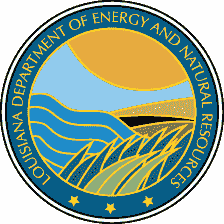Top Stories
New oilfield tank battery safety rule goes into effect
Office of Conservation requires additional precautions and warnings in higher-risk areas
NEWS RELEASE
www.dnr.louisiana.gov
For Immediate Release
Monday, Nov. 22, 2021
Contact: Patrick Courreges, 225-342-0510
BATON ROUGE – Louisiana Commissioner of Conservation Richard Ieyoub announced today that a new regulation developed by his Office of Conservation (OOC) has been formally adopted by the state to improve safety on and around oilfield tank battery sites.
Ieyoub said he directed the creation of the rule, with new requirements for fencing, warning signs and securing of potential entry hatches to the tanks themselves, immediately after a fatal accident earlier this year, in which a teenage girl, Zalee Day-Smith, was killed while on a tank battery site in Beauregard Parish.
Tank batteries are the field storage sites for oil wells that are not otherwise connected by pipeline to a market for sale. The tanks are large metal containers that may hold hundreds or thousands of gallons of crude oil, which in turn, can give off flammable fumes. Tank battery sites should never be entered by anyone who is not associated with the operations of the site, as they have the potential to create fires or explosions if a spark or open flame are introduced near a tank opening.
“We may never know exactly what happened on that site when Zalee died and accidents of that kind may be rare, but we have to do what we can to minimize the chances of it ever happening again by doing more to make people aware of potential hazards and keep them off these sites if they don’t belong there,” Ieyoub said.
Ieyoub said that part of the problem may be that the general public in Louisiana is not as aware of the potential hazards of oilfield sites as it once was, particularly younger people.
While the oil and gas industry is still a critical part of our economy and our culture in Louisiana, its overall footprint has shrunk over time, and the public’s general knowledge of oilfield site hazards has diminished, he said.
“In decades past, even people who weren’t in the oil and gas business almost always had relatives or friends who were, so there was a baseline understanding of what oilfield equipment was and what risks to avoid,” Ieyoub said. “That isn’t as much the case in this era, so we need to do more to make sure inherent hazards of working sites are understood.”
The new rule has three provisions – each aimed at a different aspect of potentially disastrous interactions between members of the public and tank battery sites.
The first part deals with directly blocking access to tank battery sites by requiring operators to construct fences a minimum of 4 feet high around the sites with the gate locked whenever the site is unmanned.
Secondly, the rule addresses entry point to the tanks themselves, requiring that all tank hatches, excluding those that might be part of a pressure relief system, be securely sealed when the site is unmanned.
Lastly, the rule seeks to make sure members of the public coming upon tank battery sites understand that they are a hazardous industrial site by requiring warning signs noting the potential for flammable contents in the tanks.
The new tank battery rule applies to all such sites that are within 500 feet of a home or highway, 1,000 feet of a church or school, or anywhere within the corporate limits of a city, town or village.
In addition, the Office of Conservation has also begun the process of creating unique identifiers and a census of all tank battery sites in the state, which has never been done in the history of the state. Previously, tank batteries were treated as just another part of a well site, and thus were not individually identified – but were simply noted on well inspection reports if there was cause to do so.
“I think there is a need for better leveraging our existing capabilities to meet modern concerns and challenges, and it’s something we’ve been working toward in my time in this office,” Ieyoub said. “This is just the next step in our ongoing goal to improve how we do our work of protecting the people and the environment while still ensuring that regulations are enforced fairly on industry.”
###
News Archives »